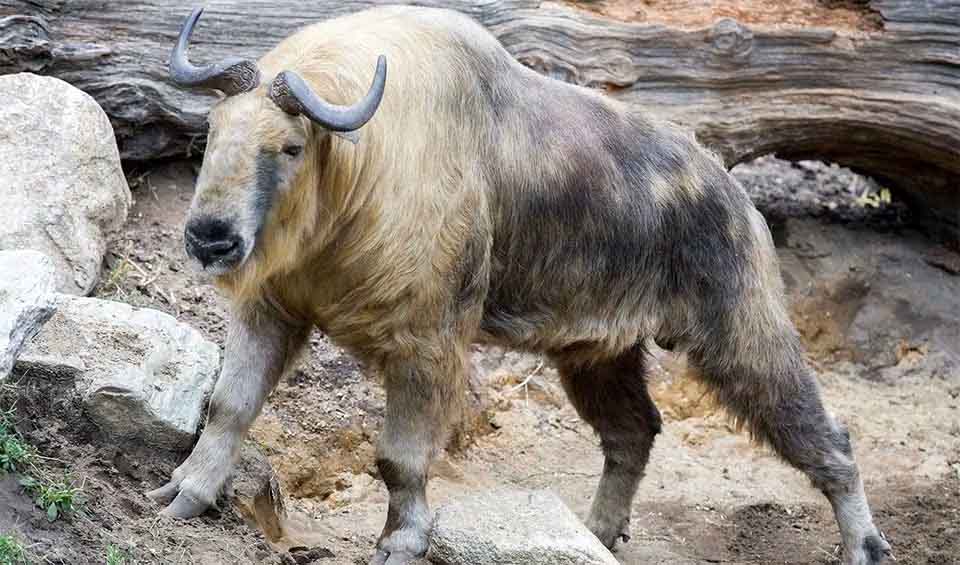A fascinating and robust mammal that roams the mountainous regions of the Himalayas, including parts of Bhutan, China, India, and Myanmar. With its unique appearance and interesting behavior, the takin is a remarkable creature that captures the interest of those who observe it.
One of the most striking features of the takin is its thick, golden-brown coat, which can also appear in shades of yellow, brown, and even black. This dense fur is crucial for survival, providing warmth in the cold, high-altitude environments where the takin lives. The fur is oily, which helps to protect the animal from the wet, misty conditions of the mountains. Its broad, muscular body is well-suited for navigating steep and rocky terrains, and it moves with surprising agility for its size.
Both males and females have large, bulbous noses and strong, curved horns that emerge from the center of their foreheads and sweep backward before curving upward. These impressive horns are used for defense and for establishing dominance within groups. The face of the takin is expressive, with a broad snout and large, soulful eyes that convey a sense of curiosity and alertness.
The takin’s habitat spans a wide range of altitudes, from 1,000 feet to over 14,000 feet above sea level. During the warmer months, they tend to move to higher elevations, where they graze on fresh vegetation. They descend to lower altitudes as winter approaches to escape the harshest weather conditions. This seasonal migration is essential for their survival, as it ensures access to food and more favorable climates throughout the year.
Distribution
 Bhutan
Bhutan China
China India
India Myanmar
MyanmarAnything we've missed?
Help us improve this page by suggesting edits. Glory never dies!
Suggest an editGet to know me
Terrestrial / Aquatic
Altricial / Precocial
Polygamous / Monogamous
Dimorphic (size) / Monomorphic
Active: Diurnal / Nocturnal
Social behavior: Solitary / Pack / Herd
Diet: Carnivore / Herbivore / Omnivore / Piscivorous / Insectivore
Migratory: Yes / No
Domesticated: Yes / No
Dangerous: Yes / No




